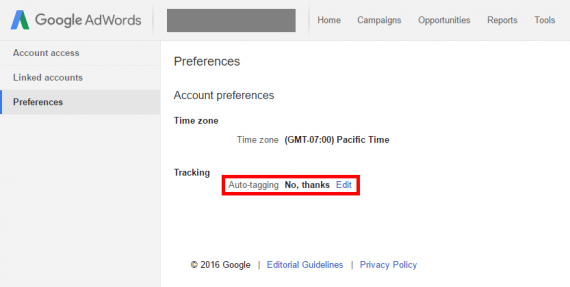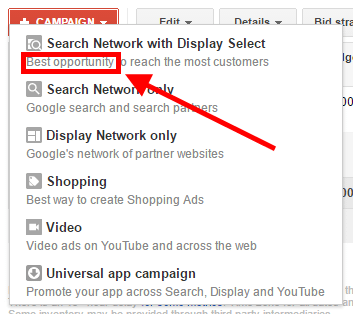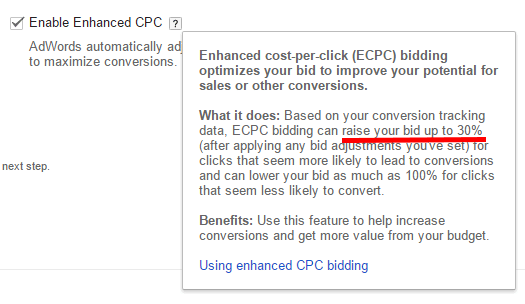I recently read Nudge: Improving Decisions About Health, Wealth, and Happiness, a book by behavioral economist Richard Thaler and legal scholar Cass Sunstein. It’s an intriguing read for anyone desiring a greater understanding of how the human brain works and what motivates us.
Since I manage online advertising campaigns, I naturally applied the principles of the book to my field. One area stood out: the impact of default settings.
Default Settings Impact Decisions, Outcomes
When a designer creates any user interface — such as a printed application, an ecommerce shopping cart, or even a school cafeteria — she has to determine the default state. Every phone has a default ringtone. Every product page on your website has a default image. Although someone other than the end consumer made each of these decisions, defaults can have a powerful effect on outcomes.
Consider the example, addressed in the book, of organ donation. In the United States, the default method of organ donation is an opt-in system, which means you are not an organ donor unless you specifically opt-in while getting your state driver’s license. This system has resulted in about 40 percent of the U.S. population choosing to be an organ donor.
Now consider Spain, Portugal, and Austria, which have up to 99 percent of the population registered as organ donors. How did they do it? Was it a huge government-sponsored ad campaign? Did proponents go door-to-door signing people up? No and no. These countries simply changed the default to an opt-out system, which means that you’re an organ donor unless you select that you don’t want to be.
This simple change makes a drastic difference in registered organ donors.
But what about the default settings from Google in your AdWords campaigns? Those settings are likely affecting your campaigns’ performance — and not in your favor.
AdWords’ Defaults vs. Campaign Performance
Let’s start at the highest level: account settings. Access them by clicking the gear icon in the upper right corner of your AdWords account. In a new account, the default option for auto-tagging is “No, thanks.”

The default option in AdWords for auto-tagging is “No, thanks.”
Without auto-tagging, your AdWords traffic has no URL variables to inform your analytics of where those clicks are coming from. This means that your AdWords paid traffic is likely getting lumped in with your Google organic traffic, since your analytics package is only picking up that Google was the referrer. That is not good.
Next, let’s look at the default settings for new campaigns in AdWords. If you click the “+ Campaign” dropdown, you’re presented with the following options.

Clicking the “+ Campaign” dropdown, you’re presented with options. Google has placed “Search Network with Display Select” at the top of the list and the description reads “Best opportunity.”
Notice how Google has placed “Search Network with Display Select” at the top of the list — more people choose the first option — and the description reads “Best opportunity.” AdWords is trying to get people to choose this campaign type. But let’s look at what that gets us.

In the Networks defaults, the campaign type has search and display together. But search users and display users react, typically, much differently.
In the Networks defaults, this campaign type has search and display together. But search users and display users are in much different mindsets and react much differently. On search, they’re seeking a solution to a problem or question. On display, they’re consuming content and ads are pulling them away from what they’re doing. This core difference requires separate search and display ads, targeted appropriately.
So AdWords is trying to “nudge” people into using a campaign type that isn’t the best?
Are Defaults Hurting Your Shopping Campaigns?
Say you’re setting up a Shopping campaign. This is a specific campaign type where you’re trying to sell products. Which defaults could you encounter here that are problematic? For starters, let’s look in the Networks section again.

When setting up an AdWords Shopping campaign, the checkbox for “Include search partners” is selected by default.
Notice the checkbox for “Include search partners.” It is selected by default. By hovering over the small question mark icon we get an explanation of what that means. Note that “search partners” includes Google properties like Google Play and Google Maps, but also “hundreds of search sites that partner with Google to show ads.”
These sites are definitely of mixed quality. Yet you’ll have no ability to adjust bids for these sites. The bid on Google is the bid for search partners. For budget-restricted advertisers, this mixed-quality traffic may be lower priority than Google-specific traffic. The default setting could be hurting your budget allocations.
Next, look in the Locations section. The default button here is “United States and Canada.”

In the Locations section for Shopping campaigns, the default selection is “United States and Canada.”
That is peculiar. This account has never targeted Canada. The company is based in the United States. It’s another example of a default that expands your reach to areas that you may not want.
Lastly, look at the Bid Strategy section. Bidding is one of the main ways to affect campaign performance. Again, there is a box that is checked by default, for “Enable Enhanced CPC” with a message underneath that states “AdWords automatically adjusts your bids to maximize conversions.” It sounds handy, but what does it mean, exactly?

In the Bid Strategy section, “Enable Enhanced CPC” is checked by default, with a message underneath that states “AdWords automatically adjusts your bids to maximize conversions.”
This option allows Google to increase your bid by as much as 30 percent or lower it by as much as 100 percent based on Google’s algorithm and your conversion data. I don’t like giving that much control to Google since my advertising costs are its revenue. It resembles putting the fox in charge of the hen house.
To summarize, defaults can greatly affect the decisions we make and the results we get. AdWords is no different. There are default options that could be impacting everything from your analytics tracking to your bids to where your ads appear.
So pay attention. Make informed decisions that will best help your company.




